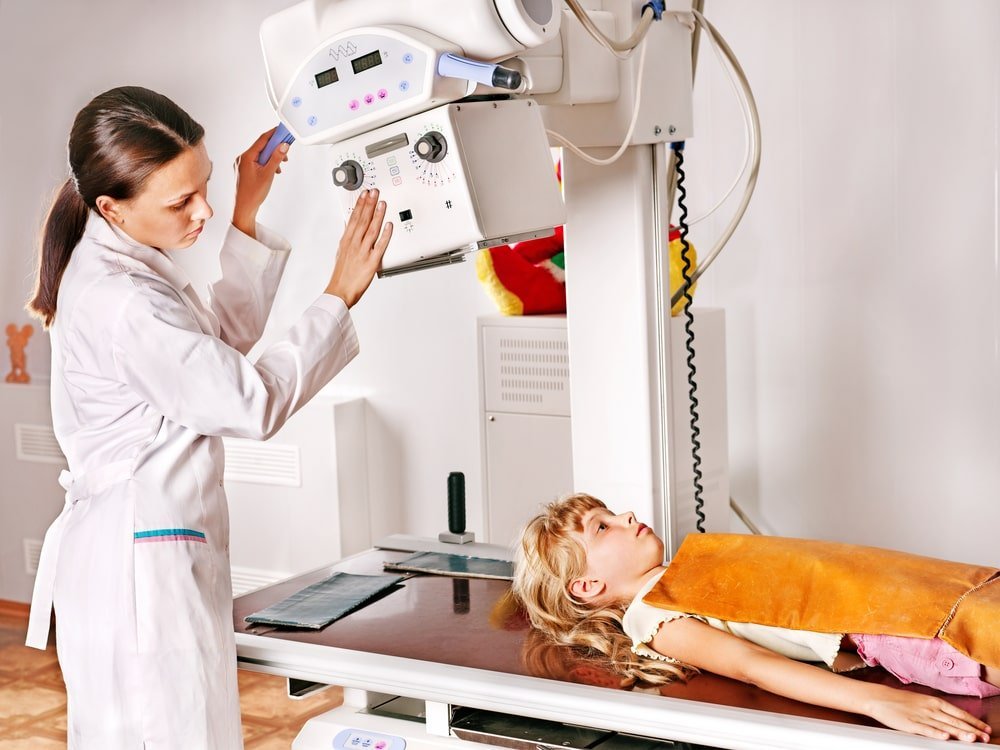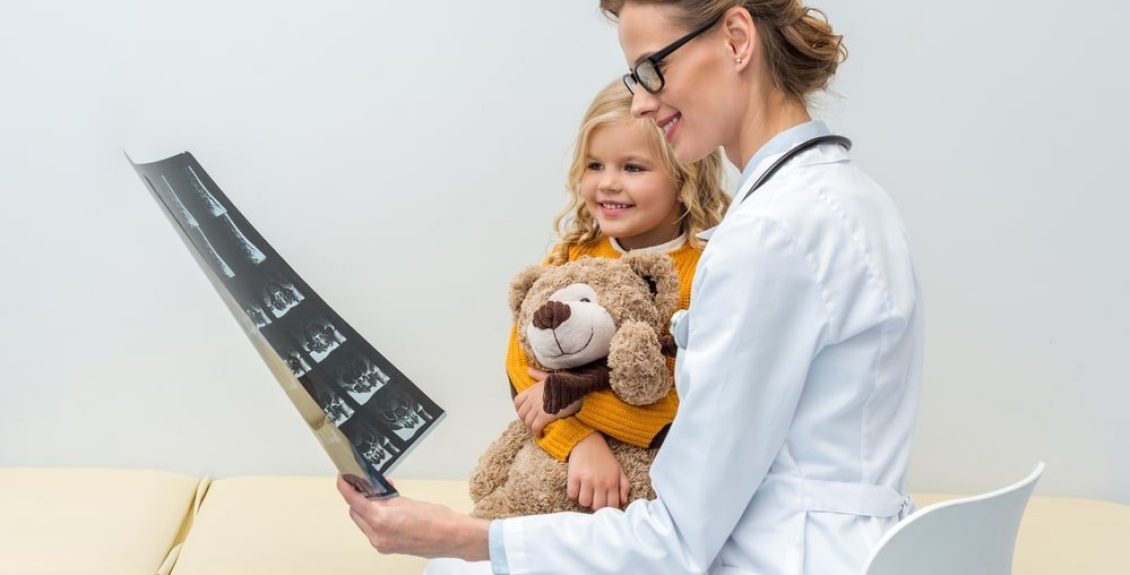Broken bones are an unfortunate event that many kids deal with at least once in their childhood. Not only is it scary for them, but it can be scary for parents too. It is our goal to provide peace of mind for both parents and kids when something happens that requires an x-ray. We accept most insurances, and also have reasonable cash pay prices. We also offer outpatient x-rays.
That means that if your child needs an x-ray and you are working with another doctor who doesn’t have a machine, you can come here for the x-rays. Basically, you can get referred by your doctor and visit Just 4 Kids for the x-ray only. There’s no need for a complete visit or exam. Outpatient x-rays are also available for adults if necessary. Give us a call to learn more about outpatient x-rays.
How X-Rays Work
Getting an x-ray is safe and painless. It is a test where a machine takes a picture of the inside of the body. The x-ray machine works by sending a beam of radiation through the body. It is recorded on special film or a computer. This creates a black and white image. Dense body parts, like bones, appear white. The softer tissue in the body, like fat or muscle, allows the radiation to go through and will appear as a gray color in the x-ray. Doctors use x-rays to diagnose all sorts of things. Including broken bones, dislocated joints, constipation, and cavities if you’re at the dentist. X-rays can also be used to locate an object that a child has swallowed. Or to check for fluid in the lungs as a sign of pneumonia.
Our X-Ray Process
There is not really any preparation required for most x-rays. However, it will help to make sure that there is no metal in your clothes, jewelry, or glasses, etc. These can complicate the image. These images may be taken with the child standing up or laying down. It depends on the body part under examination. Some body parts may be covered with a lead apron.
Getting an x-ray from a strange-looking machine might be scary for children. They won’t feel a thing, but they may not understand that. And for some kids, it may be almost impossible to hold still — especially in an uncomfortable position. Our technologist might need to take a few images from different angles to make sure that we can see everything we need to make the proper diagnosis.
The x-ray machine will take a quick image (about half of a second) and then we’ll immediately be able to see them on a screen and figure out what the next steps should be.

X-Ray Safety
X-rays are a common way to do medical imaging and have been done for a long time. The very small risk that comes with exposure to radiation during an x-ray is worth making sure that there is a correct diagnosis. We use specialized digital pediatric x-ray equipment that minimizes the use of radiation. This should help you to have peace of mind because it reduces the amount of radiation by 50 percent compared to typical x-ray equipment.
X-rays should have no side effects, so once the exam has been completed, your child is able to return to their normal activities.
How To Help Your Child
As the parent, there are some things that you may be able to do to help your child during the x-ray process. The biggest thing is to help them understand what is happening — that it is just like having a picture taken and that they won’t feel anything. It may also help to tell them about the equipment being used, how it can help them, and that you will be in the room with them throughout the process.
The Image Gently® Alliance
 Did you know that we are an advocate of the Image Gently® Alliance? This alliance is a coalition of healthcare organizations dedicated to providing safe, high-quality pediatric imaging worldwide. The main goal of this Alliance is to raise awareness about the need to adjust the radiation dose when imaging is done for children.
Did you know that we are an advocate of the Image Gently® Alliance? This alliance is a coalition of healthcare organizations dedicated to providing safe, high-quality pediatric imaging worldwide. The main goal of this Alliance is to raise awareness about the need to adjust the radiation dose when imaging is done for children.
The Image Gently Alliance began as a committee within the Society for Pediatric Radiology in 2006. The organization has developed a transformative group of campaigns to address digital radiography, fluoroscopy, interventional radiology, nuclear medicine, computed tomography, dentistry, cardiac imaging, and imaging in the setting of minor head trauma. Image Gently, the first in a now world-wide network of campaign partners, has become a recognized presence at both national and international venues.
Just 4 Kids has made the pledge to the alliance. This is evidenced in our processes, procedures, and communication to reduce radiation in pediatric x-ray care.
What X-Rays Can’t Show
X-rays are vital to make the correct diagnosis in a variety of situations. But not all of them. There are some issues that can’t be determined through an x-ray. When necessary, there are other imaging tests that can be done.
Issues like injuries to a muscle or tendon, ligament tear, or torn rotator cuff need an MRI to be examined properly. An MRI can also reveal very small fractures or bone bruises that may not appear in an x-ray image.
X-Rays At Just 4 Kids
Broken bones are an unfortunate event that many kids deal with at least once in their childhood. X-rays are an important part of the healing process. At Just 4 Kids Urgent Care, we treat broken bones often and have a wonderful team of radiologic technologists to help us properly diagnose broken bones and other bony abnormalities so we can treat them in the most appropriate manner. If you suspect that your child has a broken bone, come see us or reserve your place in line. We’ll take great care of your child!
